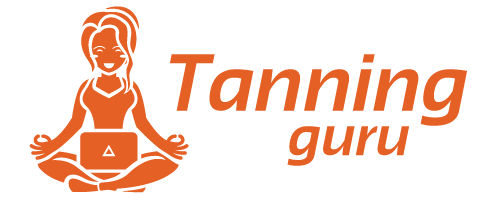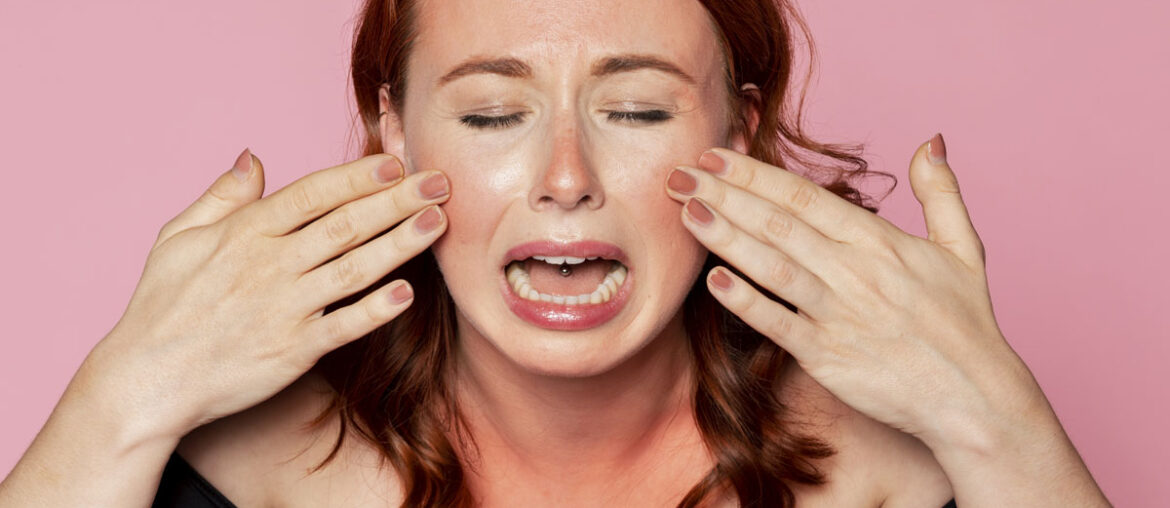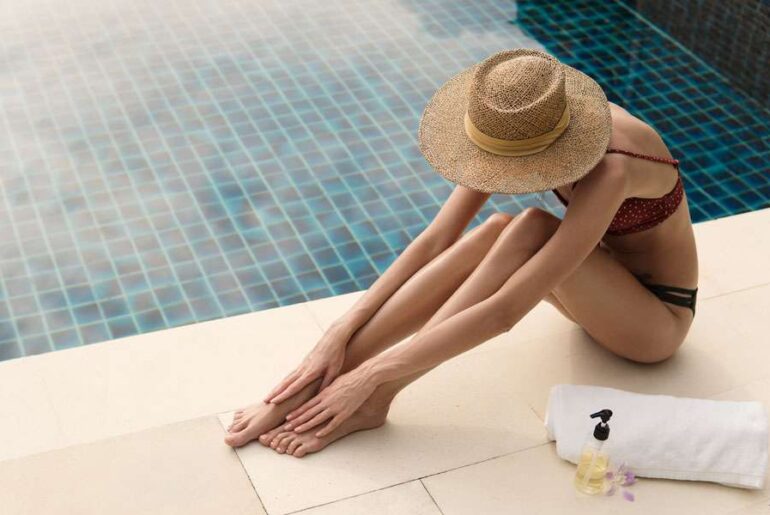Everything You Should Know About Sunburn, Sunburn Treatments, and Home Remedies for Sunburn.
What is Sunburn?
How to Treat Sunburn? OK, Let’s talk about it. You know you’ve had too much sun, but you’re having so much fun surfing, swimming, or just hanging out with friends at a park on a beautiful day that you just can’t go inside. Or you’ve been outdoors even though the weather is overcast and cloudy, yet your skin feels irritated and inflamed when you finally go inside.
If you’re extremely fair, you might even get sunburned just from driving around in your car on a sunny day. Sunburn can happen to all of us, and it doesn’t just occur at the beach after a long day of sun tanning or when the Sun is high and bright in the sky.
Sunburn is the inflammation of the outer layers of the skin due to exposure to the sun’s ultraviolet radiation (UVR). It causes damage to your skin and can also damage your DNA. It can damage your eyes and even your hair.
Sunburn also poses an additional risk for cancer, can depress the immune system, and leads to premature aging.
None of us wants to get sunburned, but when we do, there are ways to help it heal faster and even ease the pain and discomfort. If we’re smart, we’ll learn from sunburn and utilize tips and tricks to avoid getting burned in the first place.
Safe sun exposure is possible once you know the actual risks of getting sunburned.
How Common is Sun Over-Exposure?
A few factors cause people to be more susceptible to sun damage in modern times compared to even 100 years ago – certainly more so than when our ancestors were running around in animal skins.
- Ozone layer depletion
- There are many sides to the controversial global warming debate, but few can argue that the Earth’s ozone layer has been damaged. Ozone in the Earth’s stratosphere protects us from harmful ultraviolet (UV) radiation. A depleted ozone layer allows more of the Sun’s rays to reach the planet’s surface.
- Fewer antioxidants in our diets
- Antioxidants are mainly plant-based compounds that naturally protect against overexposure to the Sun. Antioxidants protect against cellular damage caused by the Sun’s rays. UV light damages skin cells that, in turn, release oxygen molecules called free radicals.
- Free radicals damage our DNA, often causing cancer and other diseases. When we eat enough antioxidants, our bodies will naturally scavenge free radicals so that they don’t cause cancer. Here’s the catch, though – due to industrial farming practices which deplete our soil of essential minerals, and genetic engineering, we’ve bred the nutrition right out of our food.
- The all-important antioxidants we need to protect us from sunburn and disease just aren’t available as profusely in the modern diet.
- Environmental toxins
- All the pollution in our environment causes free radical damage to our skin. We’re under a constant deluge of health-harming chemicals, from plastic toxins like BPA to fluoride and parabens. That makes us more vulnerable to skin damage and makes it more difficult for our bodies to heal a sunburn. When we are overloaded with toxins from our food, air, water, and soil, our bodies don’t heal as quickly because they are too busy trying to take out the trash.
- The use of chemical personal care products makes our skin more sun-sensitive
- The list of chemicals in shampoos, deodorants, make-up, hair dye, soap, perfumes, and other personal care products could literally fill a book. The toxins and free radicals in these products impair our body’s natural ability to protect us from the Sun.
- The use of pharmaceutical drugs inhibits our ability to protect our skin and eyes from the Sun’s rays.
- Our skin is downright amazing. It acts as a barrier to the world of pathogens and harmful bacteria out there. When we take certain medications, our bodies start to develop chronic inflammation.
- Though inflammation is a normal response of a healthy immune system, it should subside once a foreign pathogen is eradicated, or a wound is healed. When this inflammation persists, our skin can no longer act as the protective coating it was meant to be because our body’s energy goes to trying to heal the skin itself!
There are two primary types of drugs that cause our skin to be more sensitive to the Sun (and thus more likely to sunburn):
- Some drugs cause photo allergies. When certain medications are taken orally, injected, or rubbed n the skin, they react chemically to UV and UVB rays, making us more prone to damaged DNA and cellular distress. Our skin becomes allergic as a sign that the drug and sunlight don’t mix well.
- Other drugs cause photo-toxicity. Some photo-toxic medicines can cause sun sensitivity to last for up to 20 years, even after someone stops taking the medication! The drugs absorb UV light and then release it back into the skin, causing cell death.
If you know you’re going to be spending time in the Sun, make sure to ask your doctor if they can prescribe a medication that doesn’t make you more photosensitive.
Sadly, in the U.S., there are more cases of skin cancer annually than breast, prostate, lung, and colon cancer combined. Melanoma, a form of skin cancer, affects more young people now than ever before. Other parts of the world are also seeing increased sun damage.
One study looked at French Caucasians who lived for a prolonged period in tropical climates and found that they are also at high risk for sun damage. Though they had not been exposed to Sun for their entire lives, they showed a significant increase in skin cancers and other diseases caused by overexposure to the Sun. So, no matter where you are originally from, if you have fair skin, you need to pay special attention to UV radiation, which tends to be more significant.
Even though sunburn is more common in modern times, human beings have dealt with this disorder for thousands of years. Egyptian records are written on papyrus state that they used rice bran extracts and other plant saps in potions to heal sunburn.
Oddly enough, their culture perceived light skin as more attractive than dark skin.
Gamma oryzanol, found in rice bran extract, is still used to this day to absorb UV rays and prevent sunburn.
The Egyptians also used jasmine; oddly enough, modern researchers have discovered that this plant extract heals DNA at the cellular level in the skin and can mend skin damage.
The lupine extract was also used to lighten the skin, an ingredient still used for that purpose (ibid).
UV Index
There are also times and places when harmful UV rays are more damaging to the skin than others. In 1992 Canadian scientists developed a UV Index to measure the strength of the Sun’s radiation in different parts of the world.
This index was then adopted by the World Health Organization and World Meteorological Association to help people avoid or minimize overexposure to the Sun.
The UV Index can be read much like you would a regular weather report, indicating even hourly changes in UV radiation. For example, if a fair-skinned person typically burns at a UV Index of around 4 when outside for half an hour, when the UV Index reaches 8, they should expect to burn at least twice as fast. That means even 10 minutes in the Sun could cause sunburn.
Public health organizations warn that people who spend substantial amounts of time outside should pay attention to the UV Index and try to wear long-sleeved clothing or a brimmed hat. They should also use a non-toxic sunscreen or simply find a shady place whenever they can.
You can use old-fashioned common sense if you don’t have access to the UV Index on a computer or your smartphone. You can check your UV exposure by looking at your shadow.
In the early morning and late afternoon, your shadow will be taller than you are. That is a time of day when your UV exposure is minimized. Around midday, your shadow will be short when the sun is highest in the sky. Seek shade near a grove of trees, under a terrace or umbrella, or find a cool place indoors to wait out the most dangerous part of the day.
Getting to Know the Sun a Little Better
Germany’s Johann Wilhelm Ritter discovered ultraviolet rays in 1801. His experiments were based on the work of Carl Wilhelm Scheele, who published interesting results regarding sunlight in a 1777 study.
Aside from harmful ultraviolet rays, the Sun emits a whole range of electromagnetic energy.
The Sun emits electromagnetic radiation at varying wavelengths, which is just energy at different levels of intensity. The atmosphere acts like a multi-layer shield that protects Earth from dangerous solar radiation and also you from sunburn. Still, there are other wavelengths that are beneficial to our health.
Even some forms of solar energy are not visible to the human eye, such as gamma rays, which have a profoundly positive effect on our bodies and minds. Gamma rays can release the same amount of energy in a small burst lasting only a few seconds as the Sun will give off within its other wavelengths than it does in an entire 10-billion-year cycle!
Some peer-reviewed papers have found that our nervous systems, hearts, and even brainwave activity change with “solar and geomagnetic phenomenon.” Researchers are still trying to figure out exactly how the Sun affects us.
Already though, research has confirmed that:
- UVB rays are what help our body make Vitamin D. These rays interact with cholesterol derivatives in our skin to produce this vital vitamin. Without sunlight, the conversion cannot occur. Though we can get some of our daily recommended intake of Vitamin D from our diets, much of it needs to come from exposure to the Sun.
- Natural sunlight reduces stress, enhances creativity, intelligence, memory, and focus, and can help clear seasonal blues. It increases mood-boosting hormones like serotonin, the same chemical compound that SSRIs try to mimic in psych-therapeutic drugs.
- Sunlight has a natural analgesic effect (meaning it reduces pain without you having to pop Ibuprofen like candy.)
- Sunlight regulates cortisol in our bodies. That is a stress hormone. Though we need some cortisol to carry out biological processes, too much can keep us in a fight-or-flight state and damage our adrenal glands.
- Researchers are currently researching sunlight as a way to create pigment in the skin (melanin), which is actually used for energy in the body by your cells. Groundbreaking research has even found that animal cells are “powered” by sunlight. It seems the Sun’s light isn’t just crucial for a plant’s growth, but our own.
The caveat is that we need exposure to the UV and UVB wavelengths in small doses so that we don’t get an overdose of the harmful radiation while still allowing our bodies and minds to soak up beneficial sunlight. And this goes much further than just getting a good dose of sun-induced Vitamin D!
Inflammation
Our cells all have an intrinsic messaging system that tells our bodies when to get rid of damaged, diseased, or dying cells so that they can create new ones to replace them.
A normal inflammatory response is part of the cell’s communication with the rest of the body. When we get a wound, an infection, or come down with a cold, the body creates cytokines that signal B and T-cells to fight the infection or heal skin that has been damaged. The same thing happens when we get a sunburn. In clinical terms, a sunburn is a form of sub-lethal insult.
If our cells are already healthy, such sub-lethal insults can either cause our cells to stop growing temporarily to allow adequate time to repair the damage. Or they can stop the process of cell proliferation more permanently, and the cell will enter a state of senescence (it stops dividing and growing).
If we are already suffering from chronic inflammation from sub-clinical infections, a poor diet, or stress, a sunburn can cause the cell signaling in our body to gay haywire.
Many things happen to our cells when we get sunburn:
- Tissue damage. Part of the inflammatory response is tissue damage. That activates the body to recruit inflammatory cells like neutrophils.
- Endothelial cell damage. A particular type of tissue damage happens when you get a sunburn. The endothelial cells are disrupted. Endothelial cells line the interior surface of the blood and lymph vessels. That causes redness, swelling, and for the local blood vessels to become dilated and permeable to fluid, proteins, and blood. Some of these proteins help coat the antibodies that our cells use to fight infection.
- Our blood begins to clot. Endothelial cell damage causes blood to clot as a way to stop blood loss.
- Cells begin to proliferate. While this is an important part of cellular healing, if the cells don’t stop proliferating, it can lead to cancer.
- Macrophages are put on notice. A macrophage, defined as a large phagocytic cell found in stationary form in the tissues or as a mobile white blood cell, especially at sites of infection, can persist for months or even years, positioned in a variety of organs where they act as permanent ‘sentinels’ ready to initiate an inflammatory response.
With just one sunburn, all these things are put into action in your body. That is a part of a normal, healthy immune response, but if you continue to burn your skin, your body starts to think you are under attack all the time and will not turn the inflammatory response off when it should.
Then, it would be best if you dealt with chronic inflammation, which comes with a whole set of serious health concerns, including rheumatoid arthritis, celiac disease, irritable bowel syndrome, allergies, diabetes, cancer, and more.
Signs of Sunburn
You can tell if you have sunburn before your skin starts to peel off in sheets. Additional symptoms may include:
- Itchy skin
- Headaches
- Nausea
- Swelling
- Small fluid-filled blisters
- Fatigue
- Pain
- Skin sensitivity (hot to the touch)
Severe sunburn can cause:
- Yellow drainage from an opened sun blister
- Increased pain and skin tenderness
- Risk for infection
You can also tell if you’re getting too much Sun before any of these symptoms appear. If your skin is starting to blush at all, you may need to get out of the Sun and wait to see if your skin has been damaged. Sun damage can take several hours to develop into full-blown sunburn.
Causes of Sunburn
There are many causes of sunburn. Some are obvious. Others are not so easy to spot.
A big reason people experience increased overexposure to the sun is the sunscreen industry. These lotions and balms rarely work as advertised.
Even though the U.S. Food and Drug Administration recently put upper limits on SPF values so that manufacturers could not keep upping the ante by saying their sunscreen is SPF 150, there isn’t much difference in the performance of lotion labeled SPF 15 and one that is labeled SPF 30.
An SPF 15 will block around 94% of UV radiation, but an SPF 30 doesn’t perform twice as well to protect you from the Sun. It only blocks approximately 97% of harmful UV rays.
These numbers are also almost always arbitrary because everyone will respond to sunscreen differently, depending on their natural melanin and sun sensitivity based on the other factors we’ve already discussed.
Moreover, it doesn’t matter if you are wearing an SPF 50 sunscreen. If you are sweating profusely during sports, at the beach all day in and out of salty ocean water, or even in and out of a pool full of chlorine, you will likely need to re-apply sunscreen more often because it is being washed away.
That means that most people who use high SPF formulas aren’t applying them generously or frequently enough to get the sun protection they think they are getting.
Even worse – the sunscreens that are advertised as superstars or “sports” formulas meant to be used in these conditions don’t pass any test for increased performance. They simply don’t work better than sunscreens that are not marketed as being better for active people or someone whose sunscreen is washed off during their daily activities.
Chemists in a lab also developed modern sunscreens, but they aren’t the first attempt for people to protect their skin from too much Sun. The Food and Drug Administration classifies sunscreens as a drug because many of them have effects on your body other than protecting you from harmful UV and UVB rays.
Ancient people used sunscreens made from jasmine, rice bran, lupine, olive oil, and zinc oxide paste. Some of the formulations we use today are made from the very same ingredients, but others contain additional chemical additives that are carcinogenic or health-damaging and should be avoided.
Even sunscreens that are advertised as “all-natural” aren’t always safe. Just read the label to ensure you are protecting your skin without increasing cancer risk.
The Environmental Working Group (EWG) also has a list of active ingredients in sunscreen and sunblock that are dangerous causing the following health concerns:
- Damage to living tissue
- Disruption of the hormonal system
- Deleterious effects on the reproductive and thyroid systems and, in the case of fetal or childhood exposure, can permanently alter reproductive development or behavior (like lowering sperm count or causing estrogen-like properties in the body)
- Causes skin allergies
- May promote cancer
- It May cause liver damage
Another cause of sunburn is that people underestimate the power of the Sun. That is a perfect time, therefore, to address sunburn myths.
Sunburn Myths
There is quite a bit of confusion about sunburns and who can get them. Here are a few myths that need to be busted:
- You can only burn on hot, sunny days. WRONG! You can burn when it is overcast, cold, or even snowing outside! In fact, snow acts as a mirrored surface, often compounding the intensity of the Sun’s rays, so you can get burned even more severely while snow skiing than you would be staying at the beach all day. Water also acts as a reflective mirror of the Sun’s rays, though. So, watch out!
- There’s only one type of sunray that can harm my skin. Nope. UVB is responsible for the majority of sunburns. However, UVA penetrates deep into the skin, causing it to age. UVA isn’t as harmful as UVB but can still harm the skin and cause sunburn.
- Only fair people get sunburned. Just because you weren’t born with blonde or red hair and green or blue eyes doesn’t mean you aren’t at risk of getting a sunburn.
- If I wear sunscreen, I won’t burn. Sadly, many sunscreens are neither strong enough nor applied often enough to protect you from over-exposure to the sun completely. You can’t rely on sunscreens and lotions alone.
- I can’t get burned through a window. Many windows will block some of the harmful radiation emanating from the Sun, but anyone who is fair and driven any distance on a road trip can attest that the Sun will still burn you even through tinted glass. Even if your skin doesn’t turn red, overexposure can damage your skin’s collagen production, making you look old before your time.
- If my skin is already red, it won’t matter if I get more tanned/burned. The worst thing you can do when you’ve already had too much Sun is to expose your skin to even more of the Sun’s damaging UV rays. Even if you’re barely pink, the Sun’s effects can often take several hours to reveal themselves fully. That pink tint at noon can turn into a raging sunburn by the time you meet friends for dinner. Play it safe and find some shade the minute you think you’ve been overexposed.
- The only way I can tan is by getting a sunburn first. While it is true that a light sunburn will often turn brown instead of peeling off in layers of dead skin, this doesn’t mean that you haven’t damaged your skin. A safer way to get a tan is to slowly build it up over time rather than trying to get it all in one go. Here, you can read more about how to tan safely in Tanning Guru’s quick tanning guide.
- If I am taking antibiotics, I can’t go in the Sun. Yes and No. It depends on what kind of antibiotics your doctor prescribed you. There are a few antibiotics that make you extra sun-sensitive: tigecycline (Tygacil), sulfa drugs such as mafenide (Sulfamylon), sulfacetamide (Klaron), and tetracyclines such as doxycycline (Periostat) and minocycline (Minocin).
Why Sunburn Has Become Such a Threat
What’s the big deal about sunburn anyway?
It’s funny. There have been different societal norms regarding skin color for hundreds of years. Sometimes in our history, women primarily used skin whiteners.
Later, becoming tanned was all the rage. Some argue that when fashion designer Coco Chanel got too much sun on a Mediterranean cruise, and her photos were circulated, the tanned skin phenomenon took flight. Her friend Jean-Louis de Faucigny-Lucigne said, “I think she may have invented sunbathing.”
Tanning is, at least for now, here to stay. Beautiful women with café-colored or darker-hued skin certainly help promote the phenomenon. Halle Berry, Jessica Alba, Tyra Banks, Beverly Johnson, and hundreds more have given a pale-skinned look a run for its money.
Though we are all beautiful no matter our skin color, young women want to be alluring. Swimsuit models, even with fair skin, are rarely as pale as they would be naturally. We look up to these examples of beauty as a society, and thus we try to emulate them.
The problem is that some sun is absolutely vital for our health. Not only does it make our skin glow, but it also supports us from the inside out. Sun overexposure, however, is the cause of a growing number of skin cancers around the globe.
By all means – get some sun – but do it safely. This way, your beauty can be more than skin deep.
How to Avoid Sunburn
Now that you know why tanned skin is beautiful just as much as fair skin, let’s talk about ways to avoid sunburn.
- Eat More Naturally Occurring Vitamin D – Our skin uses ultraviolet rays to trigger the creation of Vitamin D in our bodies. However, you can also get Vitamin D from foods like egg yolks, fortified foods, and some milk and cheeses. Vegans can get Vitamin D from food sources like mushrooms, fortified almond milk, and tofu. You can also take a Vitamin D supplement.
- Spend Less Time in the Sun when UV and UVB Rays are Strongest (Check UV Index) – The best way to not get too much Sun is to spend some time out of it!
- Increase Your Healthy Fats – Not all fats make you fat. Stable, robust fats like Omega 3s found in avocado, olive oil, coconut oil, hemp seed, and flax are extremely good for rebuilding tissue, especially after sun damage.
- Make Sure You Aren’t Mineral Deficient – Most people are mineral deficient and don’t realize it. Due to the ways in which our food is grown now, we don’t get vital minerals that our bodies need for healing in the proper amounts. Deficiencies in minerals like Zinc and Magnesium can also cause us to be more photosensitive.
- Coconut Oil to the Rescue – The ancient Polynesians used coconut oil for many things, among them protecting the skin from the Sun. It only blocks about 20 percent of the Sun’s rays. Still, it also releases powerful antioxidants into the skin, which can help boost your natural ability to handle the Sun’s powerful rays.
- Try an Astaxanthin Supplement – this hard-to-pronounce compound has been found to be like a natural sunscreen. It is the compound found in algae and other organisms that consume algae, like shrimp, krill, and even flamingos. Astaxanthin gives these animals their pink color. Trials of astaxanthin have shown that it has a protecting quality against UVA damage and can even stop sagging and wrinkles caused by photo-aging.
- Limit Your Sun Exposure to Early Morning and Late Afternoon – The Sun’s rays are less intense this time of day, no matter where you live. Keeping your exposure within these hours can significantly reduce your chances of getting burned.
- If You Are Active, Plan Ahead – We brush our teeth every day, but those of us who know we are going to be outdoors often don’t really think of putting sunscreen on just as regularly as we brush our teeth. We should. Make taking care of your skin just as important as your dental health by stocking natural, non-toxic sunscreens in your gym bag, your car, your bathroom, your gym locker, or anywhere you can grab them and re-apply them throughout the day.
Why Should I Avoid Getting Too Much Sun?
If you aren’t convinced that sunburn should be avoided yet, here are a few more reasons to avoid overexposure:
- DNA Damage – Your DNA is damaged when your cells absorb a UVB photon. UVB light causes thymine base pairs next to each other in genetic sequences to bond together into pyrimidine dimers, a disruption in the strand, which reproductive enzymes cannot copy. Copying errors in DNA are linked to all sorts of diseases.
- Pain – A sunburn can cause mild to severe pain. In a worst-case scenario, you can end up in the emergency room, and even a handful of Ibuprofin won’t stop the pain.
- Lost Sleep – When you are uncomfortable due to sunburn, burning, itching, and pain, you are more likely to toss and turn at night and lose sleep. That is the very thing your body needs when it is trying to repair your skin.
- Wrinkled, Aged Skin – photo-damaged skin ages faster. Who among us wants to look old before our time?
- Higher Risk of Cancer – Damaged skin, especially over a lifetime, can increase skin cancer risk. Even if you only get one sunburn every two years of your life, you’d be increasing your cancer risk exponentially.
Ways to Treat a Sunburn
If you’re reading this, you may already have a sunburn, and all the information we’ve covered up to here is just a good dose of “I told you so.” You will love this next section if you have been unfortunate enough to be out in the sun too long or even stayed a bit past your expiration in a tanning bed. We’re going to cover the best ways to treat sunburn.
Home Remedies for Sunburn
Some of the best remedies for sunburn are as old as time. There are many natural substances that can help ease the pain, itching, and discomfort of a sunburn.
Some of these plant compounds don’t heal the skin, but they so soothe your skin so that your immune system has time to send in the clean-up crew and start to repair your skin.
Others help to boost the immune system so that inflammation runs its course naturally to heal the wound but doesn’t turn into chronic inflammation, wherein the body starts to attack its own cells.
Here is a list of Home Remedies for Sunburn.
Increase Your Water Intake
A sunburn will often dehydrate you. That is why you will sometimes have a headache along with a sunburn. Drink at least three extra 8-ounce glasses of water once you notice you’ve got a sunburn. That will also act as a natural diuretic so that your body can flush away dead and damaged cells.
For an extra immunity boost along with your regular water, add the juice of organic lemon to cleanse the body while it is working so hard to heal your damaged skin.
Eat More Fruits and Vegetables
Another way to hydrate your body and boost recovery from your sunburn is to eat fruits and vegetables with high water content. Try honeydew, cantaloupe, watermelon, papaya, cucumbers, and celery.
Use Aloe Vera
Aloe Vera has been used by cultures around the world to soothe skin irritation and sunburn for millennia. It’s also the main ingredient in many over-the-counter sunburn gels and after-sun lotions.
If you can purchase or grow a live Aloe plant, you can just break one of the leaves in half and smooth the sticky gel inside directly onto your skin. Aloe can help prevent you from scarring and will speed the recovery process. Also, Aloe can be taken internally to boost your immune system and support your health in numerous additional ways.
Apply Honey
Sticky, gooey, sweet, natural honey. Pitting the stuff on a sunburn may sound like the last thing you want to do, but honey has amazing restorative properties for the skin. That’s why it’s also included in many natural beauty regimes. It has natural antibacterial properties and is loaded with antioxidants. You can also use honey once your sunburn has healed to slow the aging process and keep your skin looking healthy.
Try Coconut Oil
Coconut pulp and coconut oil are naturally full of antiviral, antimicrobial, and antibacterial properties. Coconut oil also has a cooling effect on the skin when applied topically.
You can also combine your natural sunblock with coconut oil to keep your skin healthy and moisturized.
Rely on Sandalwood and Turmeric
These two compounds are a tag-team for anti-inflammation and skin-soothing. They were a mainstay of Ayurvedic medicine for thousands of years. The main healing compounds in turmeric are curcumins, which are also known for their ability to reduce pain – often as well as Ibuprofin! Turmeric can also reduce scarring.
Try making a paste by mixing the two into coconut oil or another non-irritating carrier and apply directly to your sunburn. Just a note of caution, turmeric is bright yellow, and it can stain your sheets, so use an old towel or blanket underneath yourself when you are applying the balm.
Calendula
Calendula comes from the marigold family. It promotes healing and has anti-inflammatory and antibacterial effects. It can also help prevent infection as your sunburn is healing.
- John’s Wort
This plant compound can be diluted and applied to help speed up healing and jump-start the immune system.
Chamomile
Known by most as a calming tea, chamomile flowers also calm irritated, inflamed skin. You can also put a few drops of chamomile extract in some cool water and use that to dampen some towels to apply directly to your sunburn. Try chamomile in a cool bath, or even sip on it to help relieve pain and tension. Wet chamomile tea bags that have been cooled are heavenly relief when placed on burned ears or eyelids.
Comfrey root
The roots of the comfrey plant contain Allotonin. This chemical plant compound promotes cellular regeneration as well as promotes healing. Comfrey can also reduce inflammation and redness associated with sunburn. It is best used in a non-irritating lotion or cream.
Witch Hazel
Witch Hazel is a very mild cleanser that you can use even when you aren’t sunburned. Witch Hazel speeds healing and acts as an antibacterial buffer while your sunburn heals. You can make a cold compress by applying organic witch hazel found at any health food store straight to your sunburned skin.
Peppermint
This one is meant to be imbibed, not applied. Drinking peppermint tea will help cool the body from the inside out due to the menthol in peppermint leaves. The leaves also reduce inflammation.
Frankincense and Myrrh
These essential oils aren’t just for the three wise men mentioned in the Bible. Myrrh and Frankincense were also used in ancient Chinese medicine as well as by the Egyptians to heal many different illnesses.
You can mix the two with an unscented lotion and apply them directly to your skin when you have a sunburn. They also act as a gentle antiseptic to clean wounds and stop infection. They are also potent antioxidants and have anti-cancer properties.
Goat’s Milk
Not only is goat’s milk cooling to the skin, but it also contains alpha-hydroxy acids (AHA), which can help to slough off dead skin cells.
Cool, Damp Towels
Even hours after you’ve left the Sun’s rays, your skin can feel like it’s on fire. Cooling the skin is paramount when you have a sunburn. Use cold water to dampen washcloths and towels and lay them across the affected area to help alleviate pain and discomfort.
Ozonated Olive Oil
The compounds in the ozonated olive oil help to jump-start cellular healing. It can also reduce blistering and peeling. Simply rub some on the affected areas, using gentle pressure so as not to irritate the skin further.
Vinegar
Of the hundreds of uses for vinegar, it’s an amazing skin soother when you have a fiery, red sunburn.
Avoid Getting Any Additional Sun
It goes without saying that you don’t need to reinjure your skin while it is trying to heal. Wait until your sunburn is completely healed before heading back out into the Sun.
Recommended Products
If you’ve tried some home remedies and still want a quick fix, some products are available that help ease burned skin.
Here are a few that we recommend:
- Maui Organics Intense After Sun Lotion. It comes in several scents, all of which are soothing and nourishing to the skin.
- Alba Botanica After Sun Lotion. This company also sells some tremendous non-toxic sunscreens.
- Seven Minerals 99% organic Aloe Vera Gel. Aloe is a time-tested way to improve sunburned skin.
- Weleda Replenishing Body Lotion with Sea Buckthorn. Sea Buckthorn is known for reducing photo damage and enhancing moisture in the skin.
When You Should See a Doctor
If your sunburn isn’t better in 24 – 48 hours, is starting to ooze or puss, you have blisters or a headache that won’t go away, you should seek medical attention.
In Conclusion
Overexposure to the Sun is much more common now than it was in our grandparent’s time. Our diets are different, our environments are different, and the ozone layer has enormous, gaping holes in it, allowing more harmful UV and UVB radiation to reach the Earth’s surface.
Our ancestors could run around partly clothed under the Sun’s rays for longer durations without having to worry about sunburn because they were living under different geological and environmental circumstances.
However, even 1000 years ago, people still got sunburned. There is evidence of sunburn balms and plant-based pain relief remedies dating back for centuries. Many of these same compounds are used by chemists now to come up with modern-day sunburn remedies.
The old saying that an ounce of prevention is worth a pound of cure is completely true for sunburn. If you can prevent it by taking steps to minimize sun exposure, and boost your skin’s ability to take more Sun, then you won’t ever have to roll around in agony with peeling skin and painful blisters once you’ve already been burned.
You will also minimize your risk for cancer, premature aging, wrinkled skin, cellular damage, DNA damage, and other health concerns by making sure you don’t over-indulge in sun-worshipping. You don’t need to be paranoid about the Sun, just cautious. Being well-informed helps, too.
No sun exposure at all is just as unhealthy as over-exposure. The Sun has many gradients of light energy, which boost our health, enliven our moods, and even make us more intelligent. Even UV rays are needed for our bodies to make Vitamin D.
With proper attention to sun exposure, we maximize the Sun’s plentiful benefits, while reducing its damaging effects.






